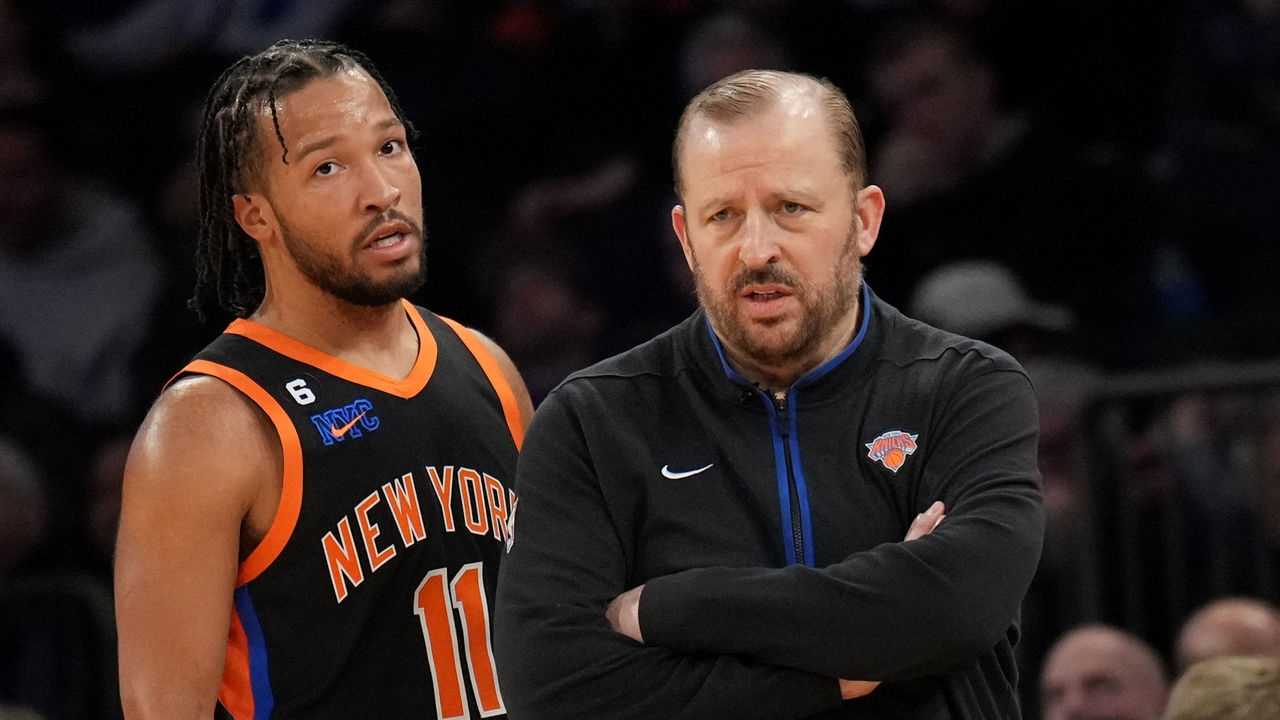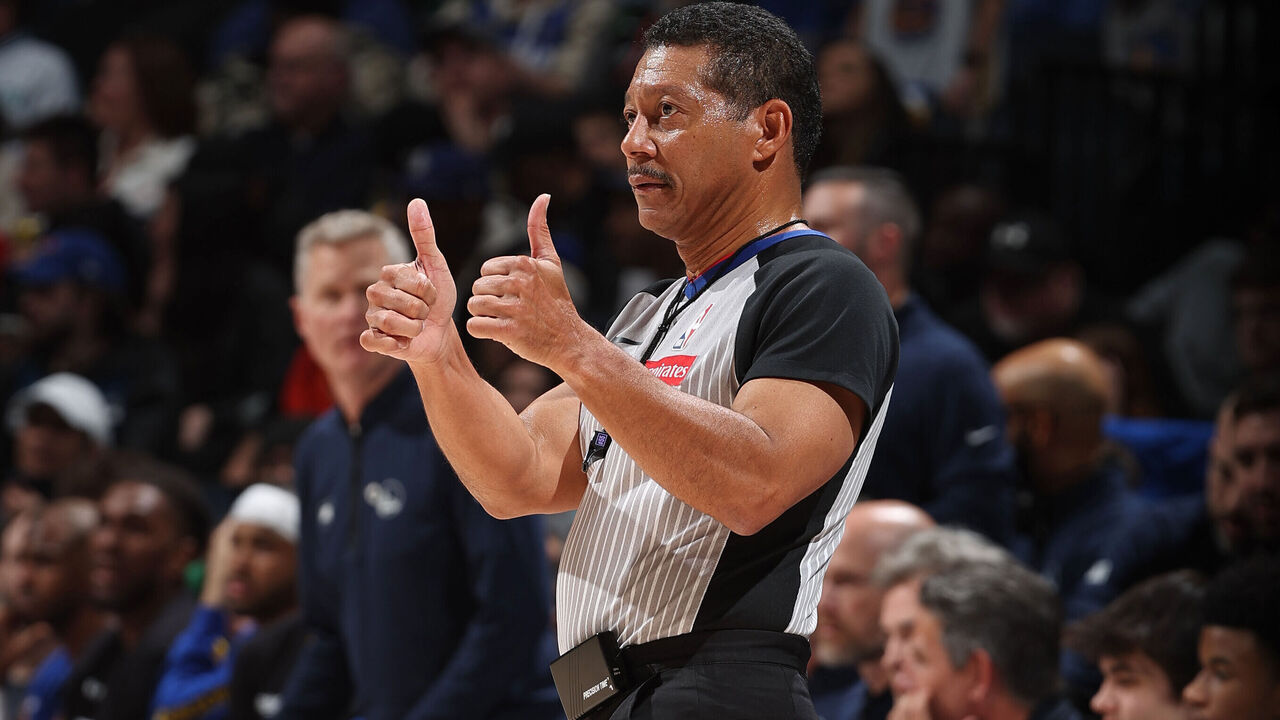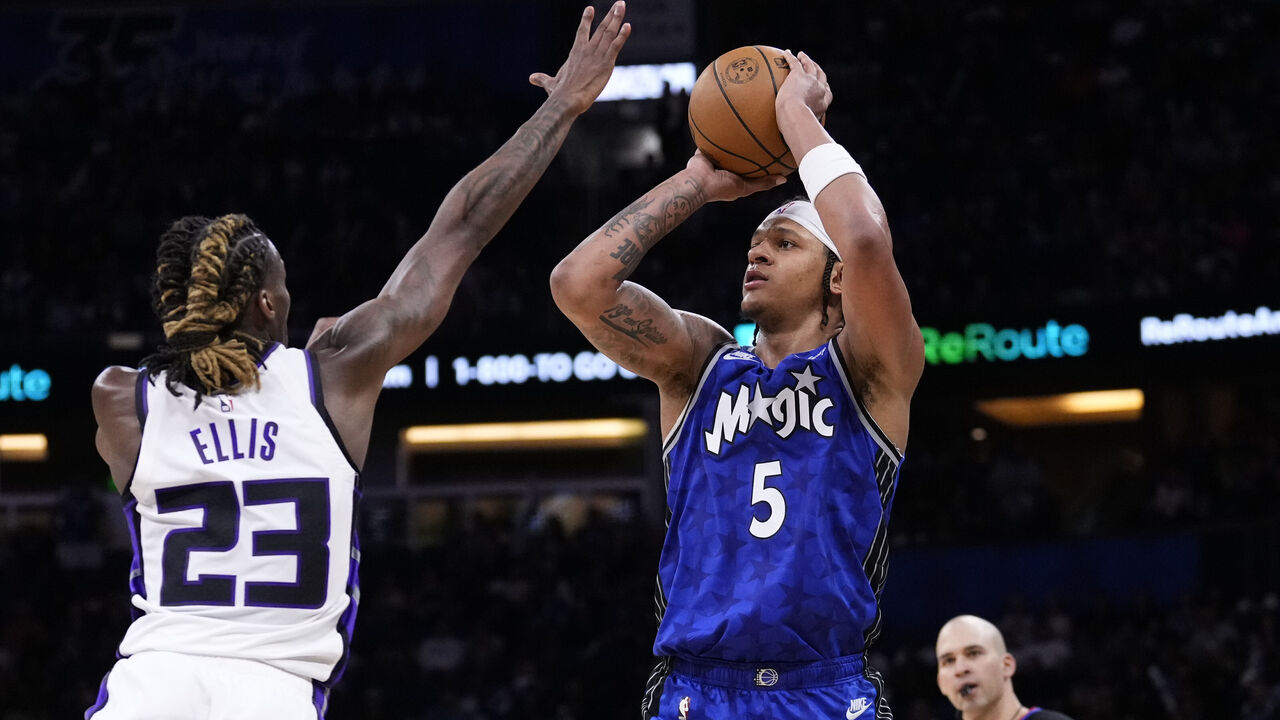Has NBA scoring finally plateaued?
According to the NBA's loudest critics, the league's offensive explosion is a crisis that needs to be addressed.
The Association's 30 teams are once again on pace to set a new benchmark for league-wide offensive efficiency (115.8 points per 100 possessions through Tuesday's games). For the fifth time in six seasons dating back to the 2018-19 campaign, a team (the Celtics) is on pace to break the record for the most efficient offense ever. Prior to 2018-19, the 1986-87 Lakers held the record for 32 years.
Players' scoring exploits have followed a similar trajectory. Since the last of Wilt Chamberlain's 60-point performances 55 years ago, there have been 51 60-point games. The first 25 of those were recorded over a 47-year period. The last 26 were recorded in the last eight seasons. There have been eight 70-point outbursts over the 61 years since Chamberlain last achieved the feat. It took 59 years for the first four to occur. The other four have happened in the last two seasons. Even Malachi Flynn can score 50 in 2024.
This data has been low-hanging fruit for those who argue that modern offense is too easy and contemporary defense is too soft. But such sweeping, surface-level observations ignore the game's radical transformation. Look to the math (and the spacing), not to a lack of toughness among the game's stars.
The 3-point and analytics revolutions led teams and individuals to hunt the highest-efficiency shots and spots on the floor. Today's players reach the NBA after developing in a positionless basketball ecosystem where athletes of all sizes can shoot, dribble, and pass in spread-out systems. Though the dimensions of the court remain the same, defenses now have to cover more space and more skilled players within it.
Still, this mathematical revolution always had functional limits. We were never going to arrive at a point where every possession ended in a bucket. Scoring was going to plateau eventually, and despite all the hand-wringing this season, that cooling period appears to be underway.
Points per game are down slightly from last year (114.7 to 114.4) after increasing in seven of the previous eight years. Points per 100 possessions have risen by just 0.9% over last season after a 2.5% bump between the 2021-22 and 2022-23 seasons. Perhaps most importantly, 3-point attempt rate has leveled off over the last couple of years after rising rapidly for more than a decade.
For anyone who worried the NBA would devolve until all teams did was trade 3-pointers or the mid-range jumper went extinct, this development is an important reminder that the game is capable of balancing itself as it changes.
Teams once got ahead of the curve by trading in their low-efficiency mid-range shots for increased 3-point frequency, where the expected value was higher (especially from the corners). Now everyone gets good shots. As teams maxed out the value of 3-pointers, the spacing in modern offenses made it easier for perimeter players to beat their man and get to the rim, where the most efficient shots still reside. Mid-range maestros who can feast from the areas where defenses are wired to concede still tend to be playoff-proven superstars. And the value of 2-point attempts (1.091 points per attempt) is nearly in line with the value of 3-point attempts this season (1.099).

Over three decades roaming NBA sidelines as a head coach or assistant, Knicks bench boss Tom Thibodeau has carved out a reputation as one of the league's greatest defensive minds. He said finding quality shots is an offense's most important mission, and modern spacing has greatly aided that quest.
"There used to be a huge advantage if you were high volume and league average from three. Most teams are high volume now," Thibodeau said before a recent victory in Toronto. "There's a lot of teams that have centers that can shoot the three, so it's opened up the floor. And then getting the ball into the paint and forcing the defense to collapse, you create great shots from that. And one of the things that often gets overlooked is when you force the defense to collapse, offensive rebounding spikes."
For defenses, it's a vicious cycle of compounding issues. But all of it - the extra points allowed, cleaner looks conceded, and paint touches against - comes back to the virtually impossible task of having to defend more space. There's a reason Mike Prada's 2022 book on the tactical evolution of the NBA and the 3-point revolution is titled "Spaced Out."
As a result, modern defenses - which are ridiculed for being less physical than fearsome units of the past - have had to become more schematically sophisticated than ever before.
Save for radical and unnecessary rule changes, not much can be done to fully reverse the scoring boom. There's no undoing the decades of basketball innovation that got us here, and no benefit to pressing rewind.
Who wants to see the return of hand-checking, which was never officially allowed but was seldom punished until the league banned it in 2004? Was the NBA more entertaining when cutting players were being mugged off the ball? What about when variations of zone defenses were illegal and games could be reduced to one-on-one isolation contests?
Eliminating the defensive three-second rule would likely encourage even more 3-pointers. Do people want to limit the number of triples teams can attempt in a game? Eliminating the corner three has always been an intriguing concept, but such a change to basketball geometry would surely come with unintended and unpredictable consequences.
That's not to say the league shouldn't think outside the box. After all, some regarded the adoption of the 3-point line itself in 1979 as blasphemous. But contemporary adaptations were always going to be far more subtle; more about finding the right balance as opposed to sending the game back to the Stone Age. The league may have found that balance in recent months.

Given the advantageous climate for offense, there was some wiggle room with respect to how much contact defensive players should be allowed. In addition, far too many offensive stars made a habit of using non-basketball maneuvers to draw free throws, inflating scoring numbers further.
That kind of foul-baiting was a point of emphasis for officials this winter, with increased defensive freedom reportedly on the horizon next season. The results have been immediate. In the roughly six weeks since the All-Star break, free-throw attempt rate is down 11.4%, from 25.4 free-throw attempts per 100 field-goal attempts over the first four months of the season to 22.5 since the break.
Sacramento Kings head coach Mike Brown, whose team set an NBA record for efficiency last season, thinks the officiating adjustment has been sensible. "This is a grown-up game, and there's some physicality that you have to prepare for in order to play," Brown told theScore.
"That's how they call it in the playoffs, so let's be consistent with it. If we're going to call it like that during the most important games, well, regular-season games are just as important to the coaches, the players, and the fans, so call it the same way. That's the direction they're going now, I think. The consistency level is starting to get there."
Scoring efficiency is down two points (or 1.7%) per 100 possessions since the All-Star break, according to Cleaning the Glass, which filters out garbage time and possessions likely to end in heaves. However, fewer whistles lead to longer possessions, and longer possessions mean fewer possessions per game, so the refined officiating has had a greater impact on total scoring. That's down 3.6%, with teams averaging 114.9 points per 48 minutes before the break and 110.8 since.
Having said that, foul-baiting hasn't played a part in the game's offensive explosion the way critics - or clips of the game's worst offenders - would have you believe. In fact, free-throw attempt rates have been plummeting for years.
That doesn't mean such grifting isn't a scourge. It's just a reminder that the league's adjustments can only go so far in this spaced-out age, which happens to be the most lucrative era in NBA history.
Not to mention, people have been complaining that the game (or defense) has gone soft for decades. In response to a 1978 crackdown on hand-checking, Washington Post writer Paul Attner said the NBA's First Commandment was "Thou Shalt Not Touch." Later, Attner writes, "Suddenly, it is blessed for players to be quick and youthful and a burden to be strong but slow. Already, there is a scramble to offset the new emphasis on finesse and agility."
Eliminating non-basketball plays, as officials are once again trying to do, makes perfect sense. Punishing the mathematic and skillful mastery of the game does not. Rules and officiating should be tweaked to encourage more action and free-flowing, aesthetically pleasing basketball on both ends, not solely to deflate scoring totals.

To combat the overwhelming effects of the pace-and-space era, defenses must continue to adapt and evolve. As Brown noted, that could involve something as simple as players practicing closeouts as often as they do core skills like free throws.
"I've been fortunate and blessed to be a part of the NBA for as long as I have, and at the end of the day, the game just seems to take care of itself," Brown said. "With as skilled as everybody is - working on the three, emphasizing spacing, emphasizing paint touches and spraying it - coaches are just trying to convince their players to guard the basketball better. Play the pick-and-roll two-on-two instead of bringing more help. Also, let's try to take away the three and not just give it up to opponents, because for some guys, it's like a layup. I've broken down closeouts to what we call 'hot' or 'normal' shooters this year more so than any other time in my coaching career. We're trying to fine-tune it to the nth degree in terms of technique."
The pendulum may have swung too far in favor of offense in recent years, but the league is finding its balance. While an officiating tune-up has helped, there's no need for radical intervention. Let the game continue to take care of itself and find the sweet spot where it can thrive for generations to come.
Joseph Casciaro is theScore's senior content producer.